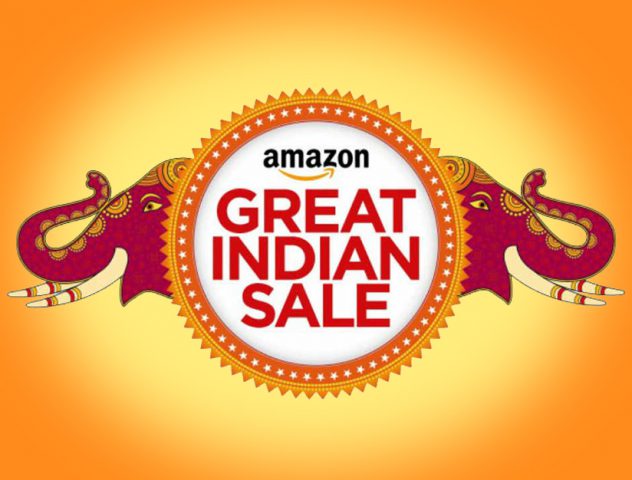Amazon has announced that it has sold more iPhones on the opening day of this year’s sale than the total sale last year.
With the announcement of the data of the Amazon Great Indian Festival sale, it is being reported that more iPhones were sold on the opening day of the sale than what was sold over the entire sale last year. The Amazon Great Indian Festival sale is going on and will end tomorrow on October 21. Amazon is one of the greatest e-commerce platforms and organises such sales every year. The e-commerce giant has announced that this year they have sold more iPhones on the first and opening day of the sale, which notably was only for Prime members.
The data of the sale numbers can undoubtedly be attributed to the fact that Amazon is selling the iPhone 11 at a good discount. The deep discounts on the price of iPhones seem to be the major reason behind the huge numbers of their overall sale. iPhone 11 was priced at Rs. 47,999 during the first day of the sale, while the market price of the device is Rs. 62,999.
Why Amazon is selling iPhone 11 at such a low price?
It is important to note that iPhones 11 is receiving a power cut from Apple due to the launch of the iPhone 12 recently on October 13, 2020. Amazon and Apple e-store both are offering great deals on iPhone 11 after the launch of a new upgraded version of the iPhone, i.e. iPhone 12.
While Amazon is selling the iPhone 11 (64GB) version at Rs. 47,999, Apple is offering the same phone at Rs. 54,900 along with airpods worth Rs. 14,900. Amazon too had given the offers of free AirPods deal, but for a short period of time. The delivery time taken by both Amazon and Apple e-store are similar, but this time people preferred Amazon over Apple e-store because Amazon provided free charging adapter and EarPods (wired earphones with lightning connector) inside the box, while Apple e-store is only providing a free USB Type-C to the lightning port cable for charging needs.
The other reason behind people choosing Amazon over the Apple store was that apart from such a low price of Rs. 47,999, Amazon was also providing a special additional saving of Rs. 1,750 on HDFC bank cards.
Apple’s market in India:
When it comes to expensive smartphones in India, iPhones are the only option Indian’s trust. In a Counterpoint Research, Apple is the number one player in the ultra-premium (Rs. 45,000 and above) segment with 55 percent market share, but still, it should be noted that it’s been around 12 years now and still Apple has only been able to capture two percent of India’s smartphone market, which now totals a half-billion user base.
Apple holds 46 percent of the smartphone market in the United States while on the other hand 8.5 percent is held by the Chinese smartphone market. It was in 2008 when the first-ever iPhone was sold in India and since then the company was eager to arrive in the country. But for many years the country hosted an inhospitable environment for the manufacturing of Apple products. Finally, in 2017, Apple started the domestic manufacturing of iPhones with iPhone SE 2016 in the Bangalore plant.
Apple has failed to crack the Indian smartphone market however it is a household name in the western side of the world. Apple is able to capture only two percent of the market share in India and is badly beaten by Chinese brands in the smartphone market. The major reason behind why Apple failed to capture the Indian market is that though India has a huge population but much of the population is quite poor and Apple smartphones tend to be ultra-expensive. They cost a sum of money that would be life-changing in some of India’s deprived segments.
Apple is not going to win in India until it solves its pricing dilemma. Apple is reluctant to change its traditional business model for selling iPhones in India. Apple is releasing multiple numbers of products to increase its value. This strategy can very well work with the Western countries but doesn’t make sense in Indian markets because here price plays a massive role in the choice of purchase for a person.
Online platforms are conquering Indian smartphone markets:
It is being observed that more customers now prefer online channels for buying a smartphone. Of course, coronavirus also is to be given credit for this because more customers are now preferring contact-less delivery and therefore have shifted to online platforms like Amazon, Flipkart, etc.
According to a recent Counterpoint Research report, online channels are holding a 43 percent share in Q2 2020 in India’s smartphone market. The report clearly states that the increase in the online channels share is due to the shift in consumer behaviour who are now trying to practice social-distancing. Amazon is reaching its highest ever share of 47 percent among the other major online channels.
Multiple financing options and attractive offers have made mobile phones more affordable for consumers. Also, these online platforms are organising more sales to drive up more and more customers towards them. India is leading in online sales, with 40 percent of all smartphones being sold online.

